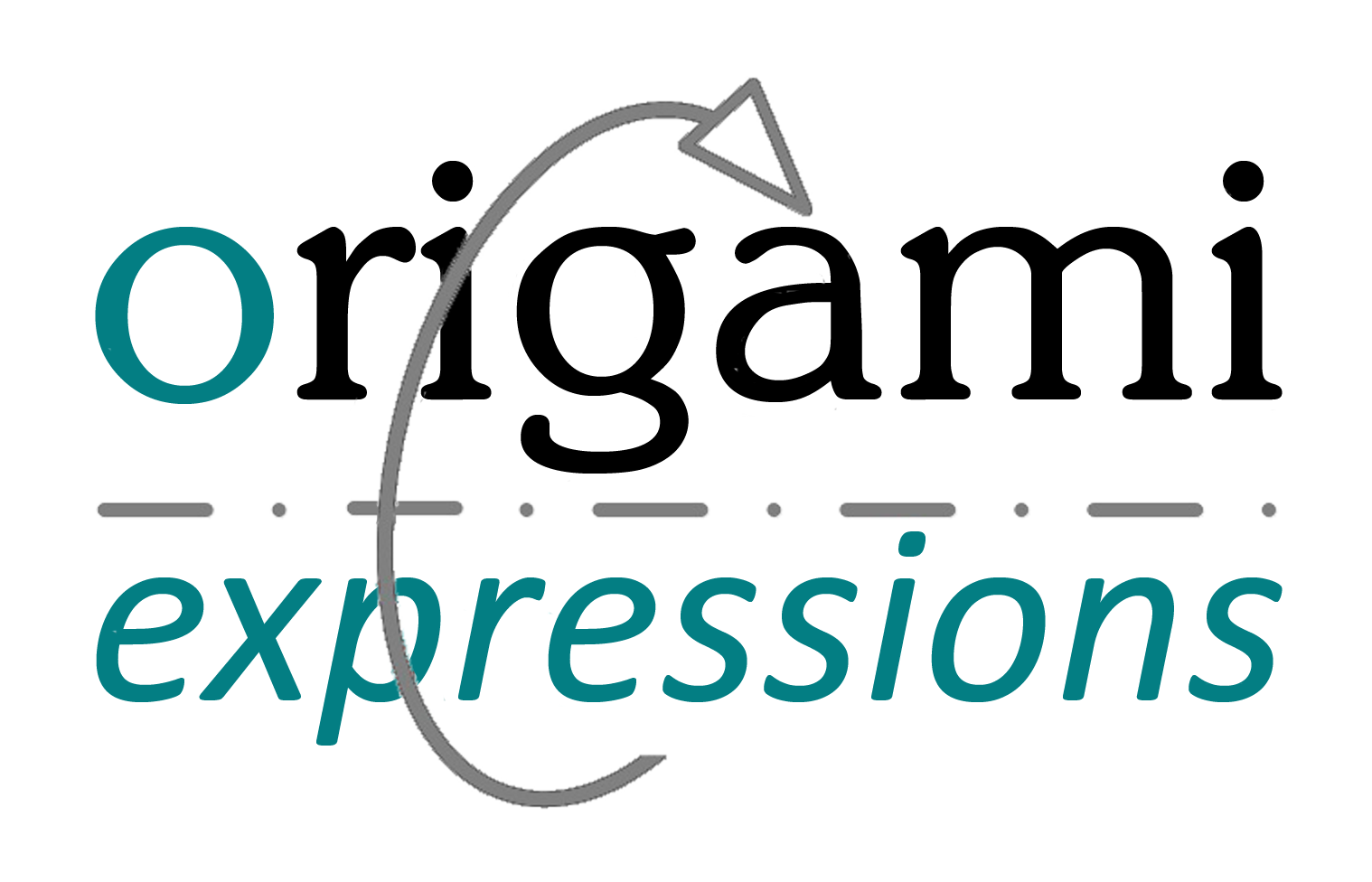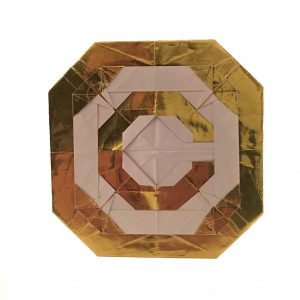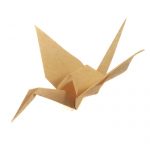Everyone has the right to the protection of the moral and material interests resulting from any scientific, literary or artistic production of which he is the author.
United Nations, Universal Declaration of Human Rights
Origami Copyright….really….?
Copyright in any creative field is often a controversial subject, particularly in today’s internet age where anyone can create and publish resources online. Origami is no exception in this – you don’t have to look very hard to find diagrams, video instructions, origami images or photographs that have been copied and published online without the permission of their creator. It is particularly difficult with origami, as copyright will apply in several ways.
This page sets out why I believe respecting copyright in origami is important, and my understanding of how copyright applies to origami. I am not an expert in law, so please don’t take my advice as legal counsel. Copyright law is complex and differs around the world, but this is how I understand the commonly accepted role of copyright within the origami community.
Origami Expressions and Origami Copyright
To begin with, here is my stance:
It is vital for the future of origami that copyright is upheld and respected. It is not just a matter of legality, or personal ethics, it is also the only way to support innovation and growth of origami as an art form.
This site does not, and never will infringe upon copyright in origami, or condone those that do. All resources hosted on, or linked to from this site are – to the best of my knowledge – either:
- My own work
- Traditional and in the public domain
- Reproduced with the permission of the copyright holder, with acknowledgements
Does Origami Copyright prevent innovation?
It is often said that copyright stifles innovation in creative arts, that it should be abolished, and that copyright infringement ‘democratises’ creativity by making everything available to everyone. I believe that this is not only untrue, but that copyright infringement actually damages innovation in origami.
It is difficult to believe that copyright has held the growth of origami back. This art form has developed dramatically over the last forty or fifty years. Much more complex models have been produced thanks to the development of sophisticated design techniques. Other creators have focused on interpretation and imagination rather than detail. The result of these developments is that the models at the cutting edge of origami today are beautiful, dramatic and awe-inspiring.
Ignoring copyright in origami might be a way of ‘democratising’ the design process, making it available to all, but it sacrifices expertise and detailed knowledge. Depth of skill is lost and the growth of origami as an art form will slow.
Innovating and producing new designs in origami at this level can be time-consuming. It takes great skill, built up over time. The late Eric Joisel used to say that it took him thirty years to come up with a new design (such as his rat, shown here and folded by me), because that was how long he had been doing origami and how long he had been honing & developing his skills. Unless designers are recognised, rewarded and paid for the time and effort they invest in their creativity, they will be unable to do so. It will simply be economically unsustainable.
There isn’t a shortage of models that can be folded with the permission of the creator today, and no need to break copyright. There are more designs to make than ever before, and instructions are available through a range of channels, including books, magazines, videos, origami societies, and websites like this one.
I recognise that not everybody in the world has the same level of access that I enjoy in the UK, but even in places where that access is more limited, there are still options available – even if that is posting a letter to the designer requesting diagrams. There really isn’t a valid reason for infringing origami copyright today – only personal choice.
How Origami Copyright works
So having set out why I believe origami copyright is important, this is my understanding of how copyright law generally applies to origami – even allowing for differences in the legal position around the world. As I said above, I’m not a lawyer, so please don’t take this as legal advice!
Traditional origami models
There is a wide range of simple traditional origami models, such as this crane. These designs are not subject to copyright and can be used and re-used for any personal or commercial purpose. Diagrams showing how to make them however, are a creative work and subject to copyright (see diagrams below).
Non-traditional models
Any completed model which isn’t traditional is subject to copyright. The original designer retains sole discretion of what can or cannot be done with that design.
The copyright for the Fiery Dragon model depicted here for example, is owned by Kade Chan. If you fold a copy of that model from a book, a video, or a taught class, that is exactly what you have made – a copy. Personal use is permitted, but commercial use is unlikely to be covered without the permission of the designer. Check first before selling it.
Origami Diagrams
Somebody has created those diagrams, so they have the copyright for them. Although a folding sequence cannot be copyrighted, diagrams are pictures of the folding sequence. They are a creative work, just as much as the final model, so the same rules apply.
You can use the diagrams to make the model for personal use. Commercial use is unlikely to be permitted without permission of the copyright holder. You may not reproduce them, or sell them (eg by compiling them with others into a different book and reselling them). That includes the diagrams for traditional models on this site, which I created!
Origami Video Instructions
The same restrictions apply to videos as for origami diagrams. The person or people who made the video hold the copyright for it.
If you want to make a video showing how to fold the model, you should ask the designer’s permission to do so – as a matter of ethics and politeness as much as anything else. For example, a while ago I posted a blog featuring Hsi-Min Tai’s dolphin and somebody asked me for video instructions. I said I would do so, provided the designer gave permission. They did, so I will be making this video soon.
Crease Patterns
These are just another form of diagram – the creases that make up the model if it is unfolded. They are subject to the same copyright as other diagrams, and the finished work.
Photos
Like any other photograph, the photographer owns the copyright of a photo of an origami model. If you take a picture of a design and use it on something like this blog or instagram, you should credit the designer of the original model.
If you use somebody else’s photo, you should credit the photographer as well as the designer. As you can see, the photos on this site are taken by me and all models are credited in the blog text.
Educational or Charitable Use
This is a bit of a grey area! Some designers permit educational or charitable use of their designs, some don’t. The solution is pretty simple though: unless you can see somewhere (eg their website) that they have expressly permitted educational or charitable use, assume they haven’t and ask first.
Origami Copyright and Ethics
One of the most respected origami creators in the world, Joseph Wu has frequently posted on his facebook page about the vitriolic abuse and insults he gets online from people who are offended that he does not make diagrams available for more of his models. He shouldn’t have to put up with this – it’s unfair, unpleasant, and unnecessary. I would love to try my hand at some of Wu’s designs, but I respect his choice and his right to make that decision.
In the end, it is not just a matter of law, it’s also integrity. Do you want to be the person that contributes to origami and helps it grow over the long term, or takes from it for instant gratification and a misplaced sense of entitlement? Personally, I know which I’d rather be.
Further Information
The following pages contain more information about origami copyright:
The copyright page on the OrigamiUSA website
The Origami Authors and Creators website
The copyright page on Robert Lang’s website
The copyright page on Joseph Wu’s website (click the copyright link at the bottom of the homepage)
The Origami Copyright Logo
The model at the top of this page is an Origami Copyright Sign, designed by Morisue Kei and folded by me.
Get Involved
I would love to hear your thoughts on origami copyright – either in the comments below, or you can either contact me on the link at the top of this page. You can also find me on Instagram or Twitter.
Sign up for my origami newsletter here and get our free Origami eBook.





